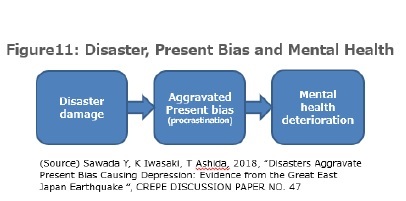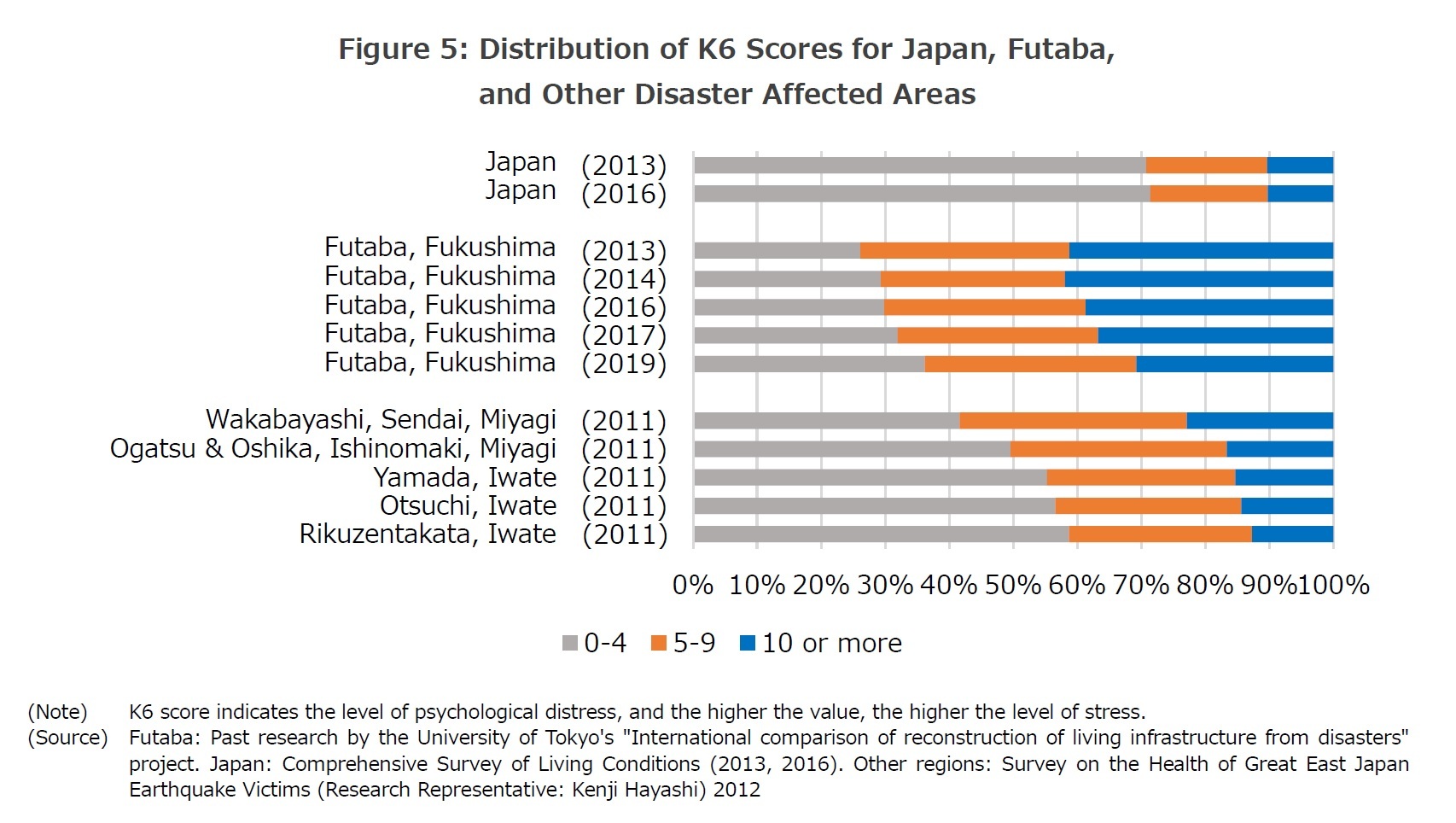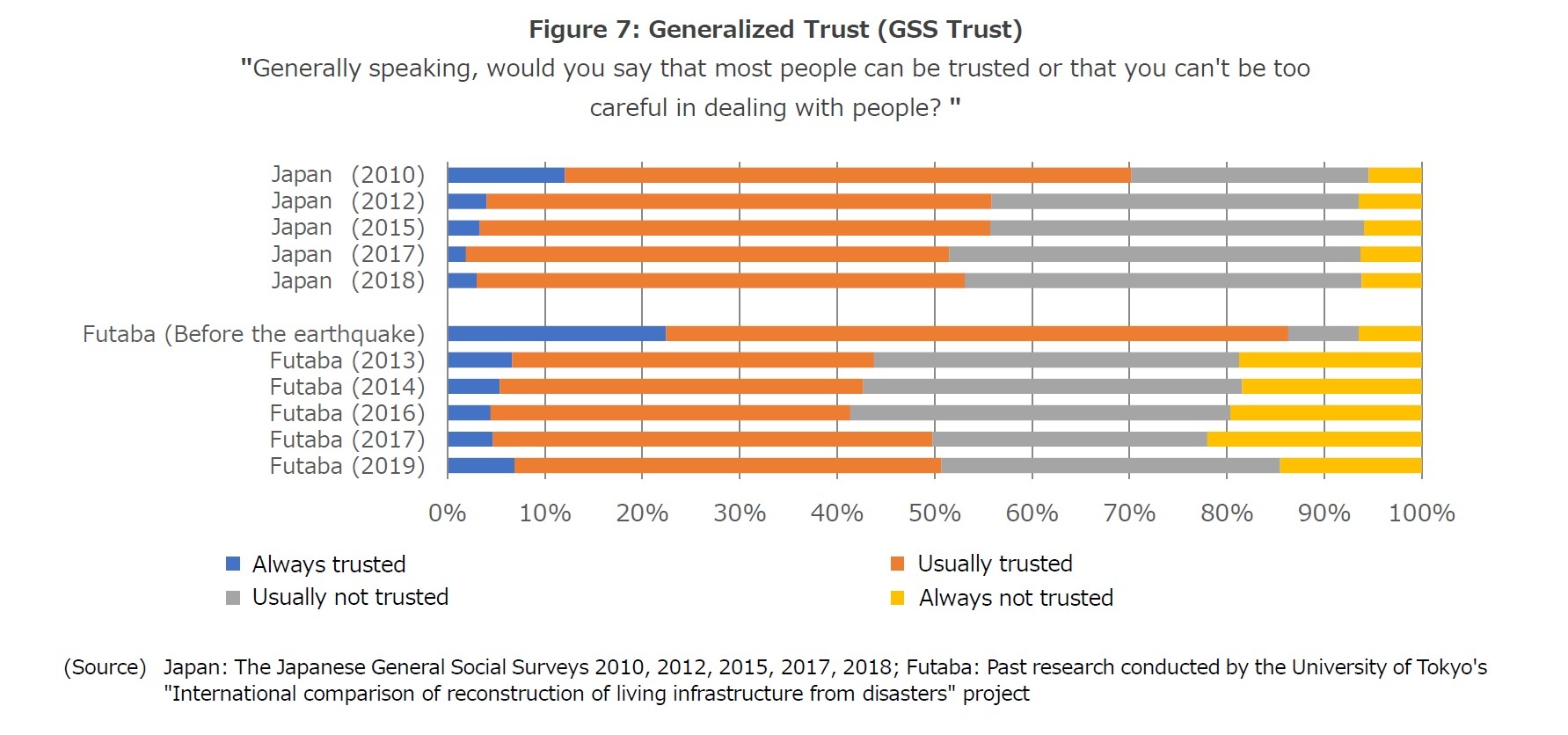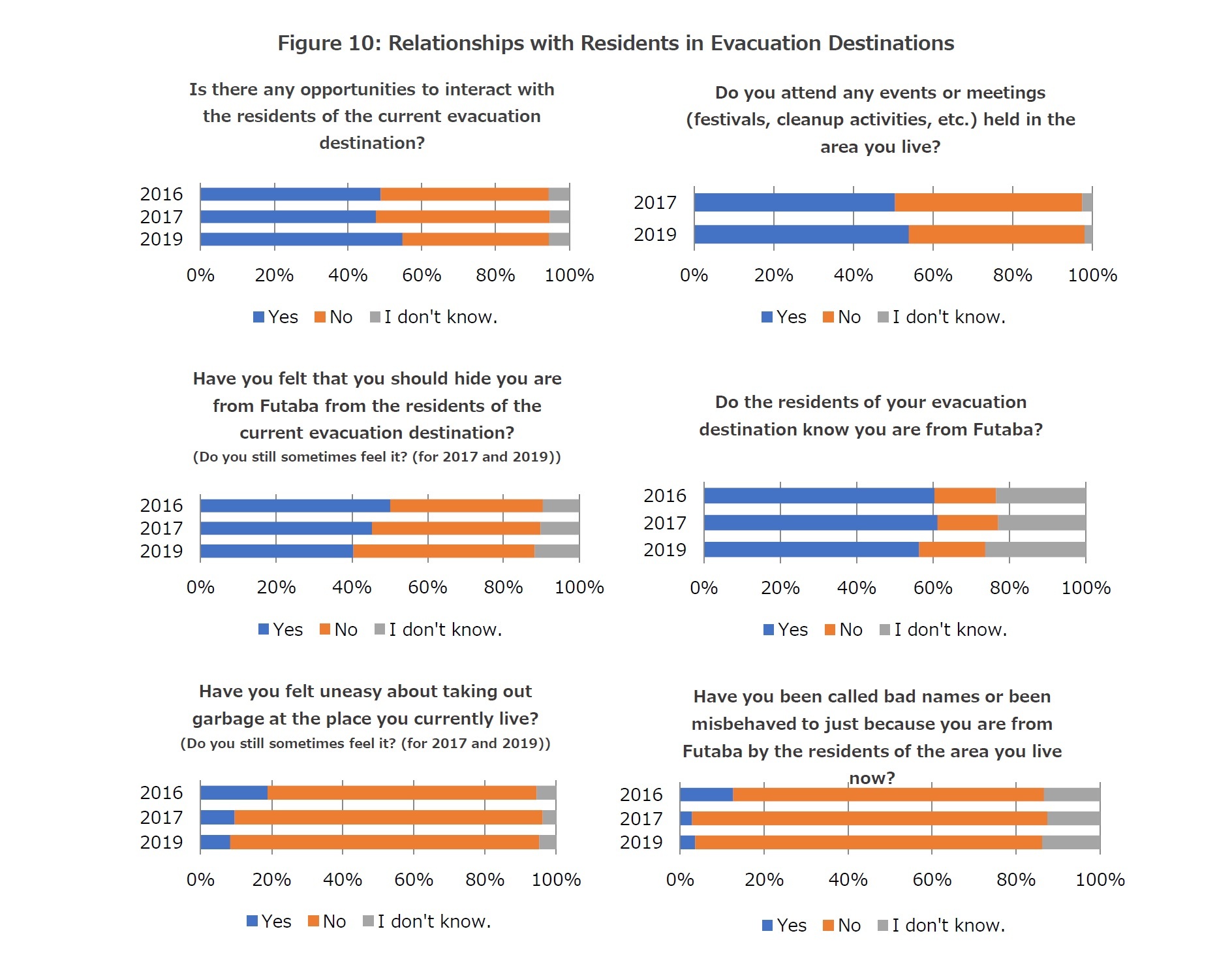- NLI Research Institute >
- Life >
- "Damage, Living Environment, and Reconstruction Under the Great East Japan Earthquake"-The 5th Survey of Nuclear Disaster Evacuees from Futaba, Fukushima, Summary of Results 2019
"Damage, Living Environment, and Reconstruction Under the Great East Japan Earthquake"-The 5th Survey of Nuclear Disaster Evacuees from Futaba, Fukushima, Summary of Results 2019
Insurance Research Department Keiko Iwasaki
Font size
- S
- M
- L
1――Basic Information
The survey targeted heads of households and Figures 1 and 2 show the distribution of age and gender of the respondents. As we can see from these figures, compared to the age and gender distribution reported in the national census, the age distribution of the respondents is left-skewed, with the majority of respondents in their late 60s. The gender distribution shows that the majority of respondents are male. In addition, since the survey was conducted after the tremendous disaster, it is possible that the distributions of the respondents' characteristics are significantly different from those of general questionnaire surveys. Therefore, it should be noted that the results of this survey do not necessarily indicate the general trend of Futaba residents.
1 This research was supported by the following research grants.
Grant-in-Aid for Scientific Research (15 J09313, 26220502, LZ003), Research Grants of the Japan Center for Economic Research.
This study is approved by the Ethics Committee of the University of Tokyo (19 -73).
2――Health Condition
3――Change in Social Capital
There are several indicators that are commonly used to measure social capital, but we focused on three items. First, we checked the level of "generalized trust" using the GSS trust question, which is one of the most commonly used social capital measures. Generalized trust among Futaba residents had been decreasing from 2013 to 2016 (portion of those that think people can be trusted had been decreasing). However, since 2017, the portion of those that think people can be trusted has been gradually increasing (see Figure 7). The overall distribution has almost recovered to the same level as that of Japan in 2019, eight years after the disaster. On the other hand, since Futaba had a very high generalized trust level before the disaster, recovery to its original high level will take much longer.
The second indicator of social capital, "frequency of mutual assistance with neighbors," also shows a gradual recovery trend. In addition, the third indicator of social capital, "trust of neighbors" also shows a gradual recovery trend since 2016, but both trends have been very moderate. It will take a very long time for social capital to recover, and we believe it is important to continue to monitor these changes over the long term.
4――Building Relationships with Residents at Evacuation Destinations
5――Relationship Between Damage and Present Bias
 We found exposure to a disaster aggravates an individual’s present bias and this causal relationship can be a key mechanism behind the disaster and mental health deterioration nexus (see Figure 1). Present bias is an individual's procrastination tendency known to be intimately linked to harmful behaviors against health, such as overeating, smoking, and excessive alcohol drinking. In disaster affected areas, various activities and policies to improve health and to encourage communication have been introduced, such as regular lunch programs, radio gymnastics and other events, the installation of free running machines in community centers, and the use of architectural design in public reconstruction housing which encourages interactions among residents. These activities and policies are considered to prevent the deterioration of mental health caused by procrastination tendencies, and our study results support the effectiveness of such activities and policies. However, it should be noted that not everyone faces aggravation of present bias or mental health deterioration after a disaster and the purpose of our study is to provide policy implications.
We found exposure to a disaster aggravates an individual’s present bias and this causal relationship can be a key mechanism behind the disaster and mental health deterioration nexus (see Figure 1). Present bias is an individual's procrastination tendency known to be intimately linked to harmful behaviors against health, such as overeating, smoking, and excessive alcohol drinking. In disaster affected areas, various activities and policies to improve health and to encourage communication have been introduced, such as regular lunch programs, radio gymnastics and other events, the installation of free running machines in community centers, and the use of architectural design in public reconstruction housing which encourages interactions among residents. These activities and policies are considered to prevent the deterioration of mental health caused by procrastination tendencies, and our study results support the effectiveness of such activities and policies. However, it should be noted that not everyone faces aggravation of present bias or mental health deterioration after a disaster and the purpose of our study is to provide policy implications.
6―― Summary of Findings from the Five Rounds of Surveys
(2) In particular, there was a possibility that the mental health of those who had lived in temporary shelters for a long time was in a serious condition. However, currently, even after many of the residents have already moved from temporary shelters to public reconstruction housing, the mental health of residents in public reconstruction housing tends to be in a serious condition, and continuous support is important.
(3) As to changes in income and health condition caused by the disaster, we find that the greater the extent of decrease or deterioration is, the greater the degree of decline in individual well-being tends to be. This implies the necessity of sufficient compensation so that the original state of the survivors’ well-being can be recovered.
(4) The disaster has weakened the social capital of Futaba residents, and recovery may take a very long time.
(5) Keeping in touch with friends from pre-disaster times as well as participating in hobbies and volunteer activities after the disaster may help people maintain good mental health.
(6) Though relationship building with the residents of the evacuation destinations shows some gradual progress, the progress is subtle and it is still thought to be an important challenge that evacuees are facing.
(7) Aggravated present bias (procrastination tendencies) due to disasters can lead to a decline in mental health condition, but policies that promote interaction among residents and encourage good health behaviors can prevent such a decline.
These results have been presented at international and domestic academic conferences. In addition, these results have been published in international academic journals. We intend to continue our analysis and contribute to the improvement of disaster preparation/rehabilitation policies.
Our survey results are based on aggregates and analyses of responses from approximately 24% of the households of Futaba and do not represent all Futaba residents. Since the survey was conducted after a major disaster, the characteristics of respondents may be very different from general surveys and there is a possibility of an overestimation in our results due to the deterioration of physical and mental health conditions. Therefore, special caution is required in interpreting the results, and any definitive judgments based solely on these findings should be avoided.

03-3512-1882
レポート紹介
-
研究領域
-
経済
-
金融・為替
-
資産運用・資産形成
-
年金
-
社会保障制度
-
保険
-
不動産
-
経営・ビジネス
-
暮らし
-
ジェロントロジー(高齢社会総合研究)
-
医療・介護・健康・ヘルスケア
-
政策提言
-
-
注目テーマ・キーワード
-
統計・指標・重要イベント
-
媒体
- アクセスランキング

























